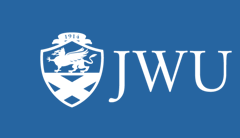To download dissertations and theses, please click on the appropriate "Download" button for your campus to log in and be e-verified. When you reach the "Sign into your JWU email" page, enter your JWU username and password.
Non-JWU users: Please talk to your librarian about requesting this dissertation through interlibrary loan.
Implementing Transfer and Articulation: A Case Study of Community Colleges and State Universities
Abstract
Higher education in the United States is facing increasing demands for accountability in response to dismal college completion rates. Seeking to increase educational effectiveness, many states reform higher education governance structures (Novak, 1996). Both states and higher education governing bodies have sought to increase college completion by improving community college to university transfers (Kisker, Wagoner & Cohen, 2011). Transfer and articulation policies have been part of higher education for years, yet have rarely exceeded 33 percent (Townsend & Wilson, 2002). This study explored the cultural aspects of a new transfer policy from the perspectives of key stakeholders. It relied upon five precepts proposed by Tierney (2008) to determine the effectiveness of governance communication and decision-making. Handel's (2011) theory of a transfer affirming culture framed the findings as to the elements of transfer success at the community colleges and state university. Added to this theory was the work of Jain, Herrera, Bernal, and Solorzano (2011) which defines the requisite services for pre-transfer and post-transfer success of non-traditional students. This study was guided by the following research question: How do community college and state university faculty, administrators and staff perceive the transfer articulation policy in relation to their campus cultures? A qualitative multi-site case study design was used to gather rich, descriptive, in-depth information (Stake, 1995). Semi-structured interviews were conducted with N=5, faculty and N=5, elite informants and N=1, staff. Three focus groups (N=3) were conducted with N=7 faculty, and N=7 staff. Data collection included N=7, observations of faculty meetings and analysis of documents that were pertinent to the study. The researcher analyzed transcripts, field notes and documents to corroborate major themes (Boyatzis, 1998). Findings revealed that difficulties may exist between community college curricula and student transfer pathways as well as a cultural gap between community colleges and the state university. They also showed the politics surrounding higher education governance reform and a clash of political and academic cultures. This study may help policy makers promote state wide transfer and articulation initiatives and be instructive for faculty, administrators and staff as they create a transfer affirming culture on their campuses.
Subject Area
Community college education|Higher Education Administration|Education Policy
Recommended Citation
Senie, Kathryn C, "Implementing Transfer and Articulation: A Case Study of Community Colleges and State Universities" (2014). Dissertation & Theses Collection. AAI3621992.
https://scholarsarchive.jwu.edu/dissertations/AAI3621992

